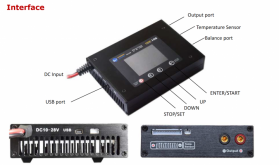I'm about to get eight of the Xuba (or whatever the replacement supplier is) 280 AH cells from the group buy thread. Hooray for that, I'll save some money!
I'm trying to pick a decent BMS (and maybe a balancer?) for this setup. This unnamed BMS from Electric Car Parts Company has been mentioned and looks good, but they mention using it alongside a QNBBM balancer (I assume this is what they're talking about?). However I can't tell how necessary the balancer is. The unnamed BMS has some ability to balance cells... it says it's balance current is 35 mA which...seems like not much?
Just trying to figure out how I should be going about this, given that I will tend to draw the batteries down to maybe 20-30% SOC before charging them again, and I will likely only ever charge them up to 90% SOC, particularly since I'll be mostly charging them with a generator in the foreseeable future (I hope to add solar, but I suspect that it'll only power all my stuff in the summer, if then).
Any thoughts are welcome, including suggestions on alternate BMS. BMSi? BMSs? BMSi.
I'm trying to pick a decent BMS (and maybe a balancer?) for this setup. This unnamed BMS from Electric Car Parts Company has been mentioned and looks good, but they mention using it alongside a QNBBM balancer (I assume this is what they're talking about?). However I can't tell how necessary the balancer is. The unnamed BMS has some ability to balance cells... it says it's balance current is 35 mA which...seems like not much?
Just trying to figure out how I should be going about this, given that I will tend to draw the batteries down to maybe 20-30% SOC before charging them again, and I will likely only ever charge them up to 90% SOC, particularly since I'll be mostly charging them with a generator in the foreseeable future (I hope to add solar, but I suspect that it'll only power all my stuff in the summer, if then).
Any thoughts are welcome, including suggestions on alternate BMS. BMSi? BMSs? BMSi.



